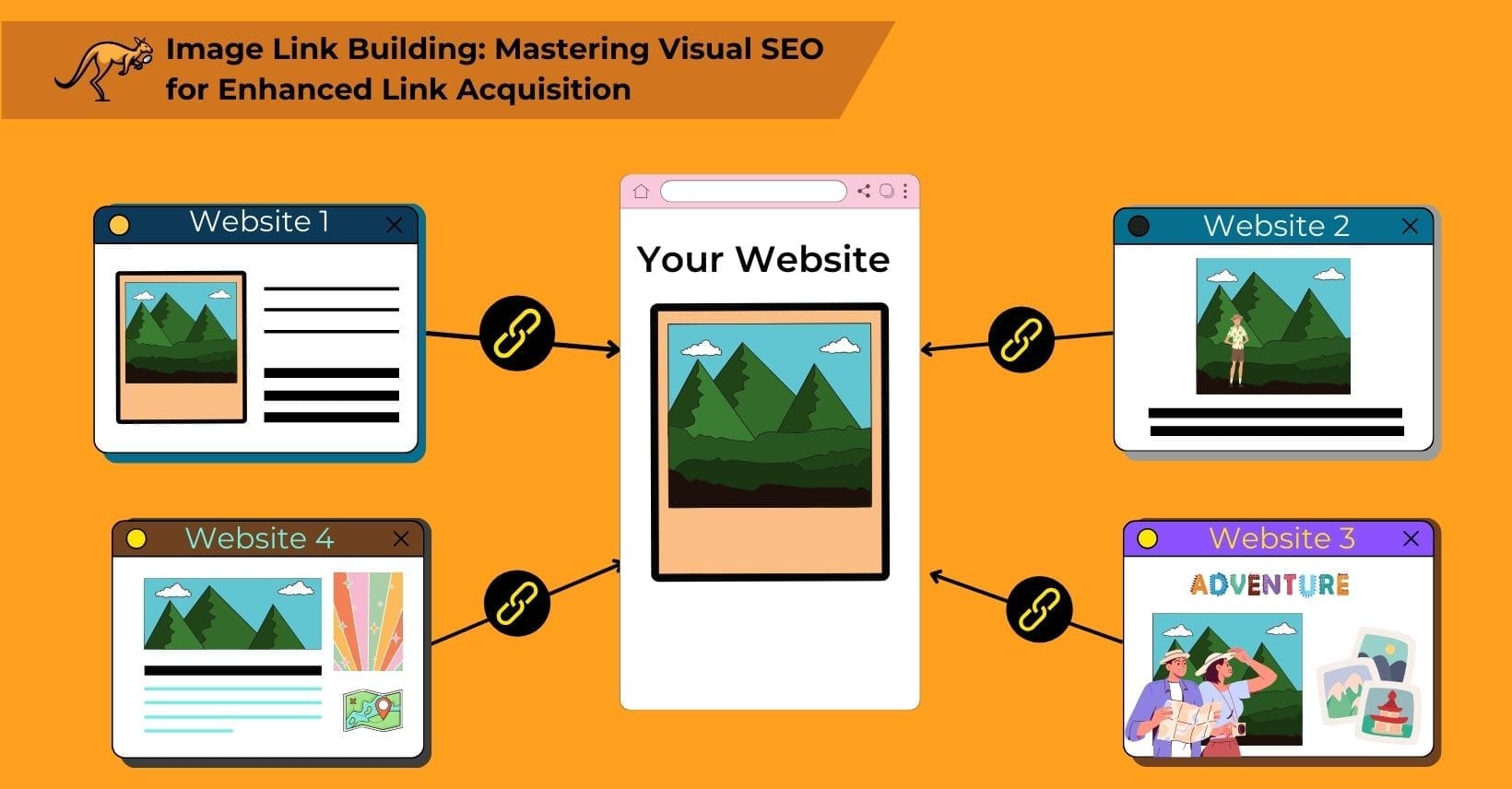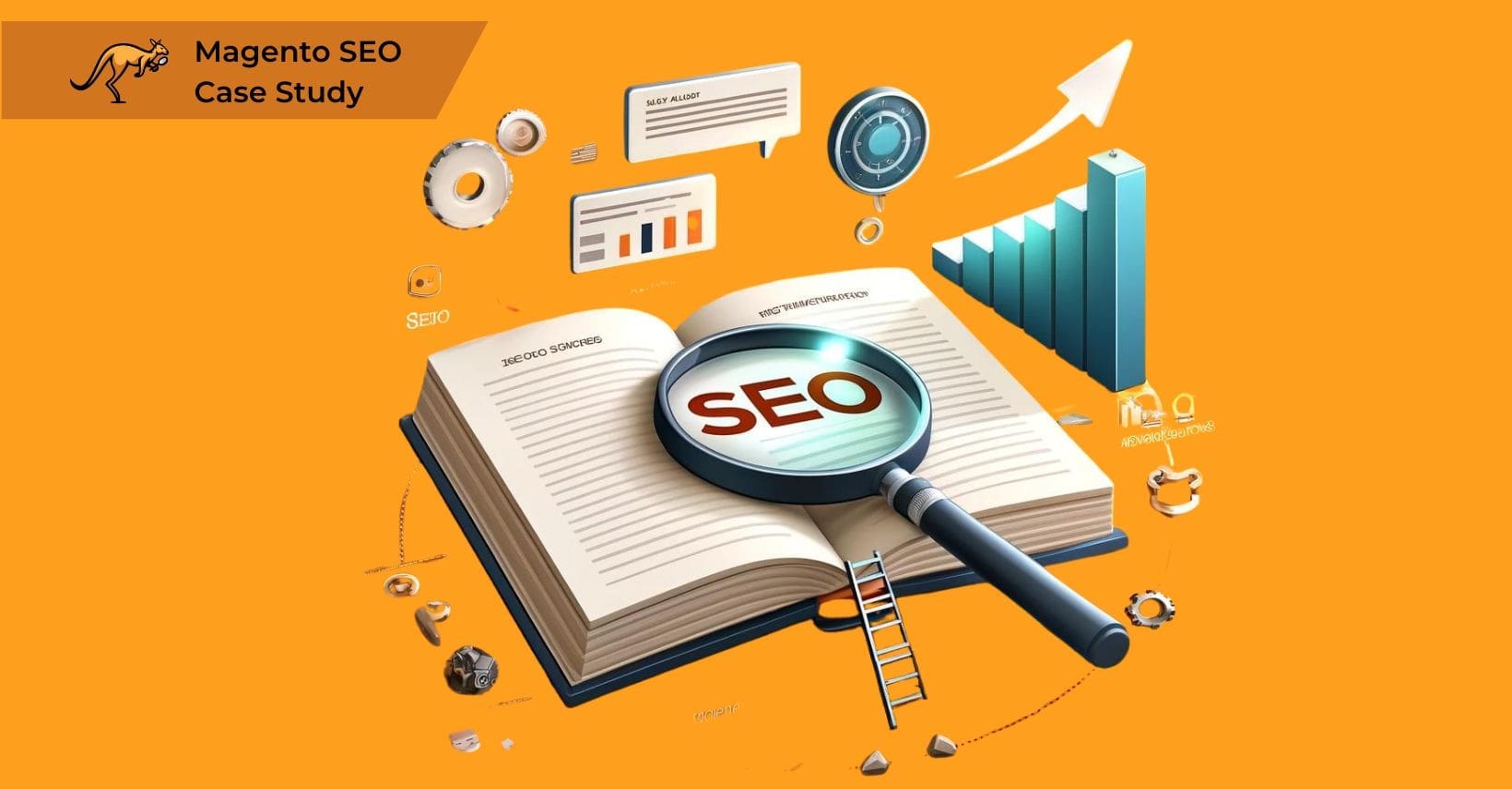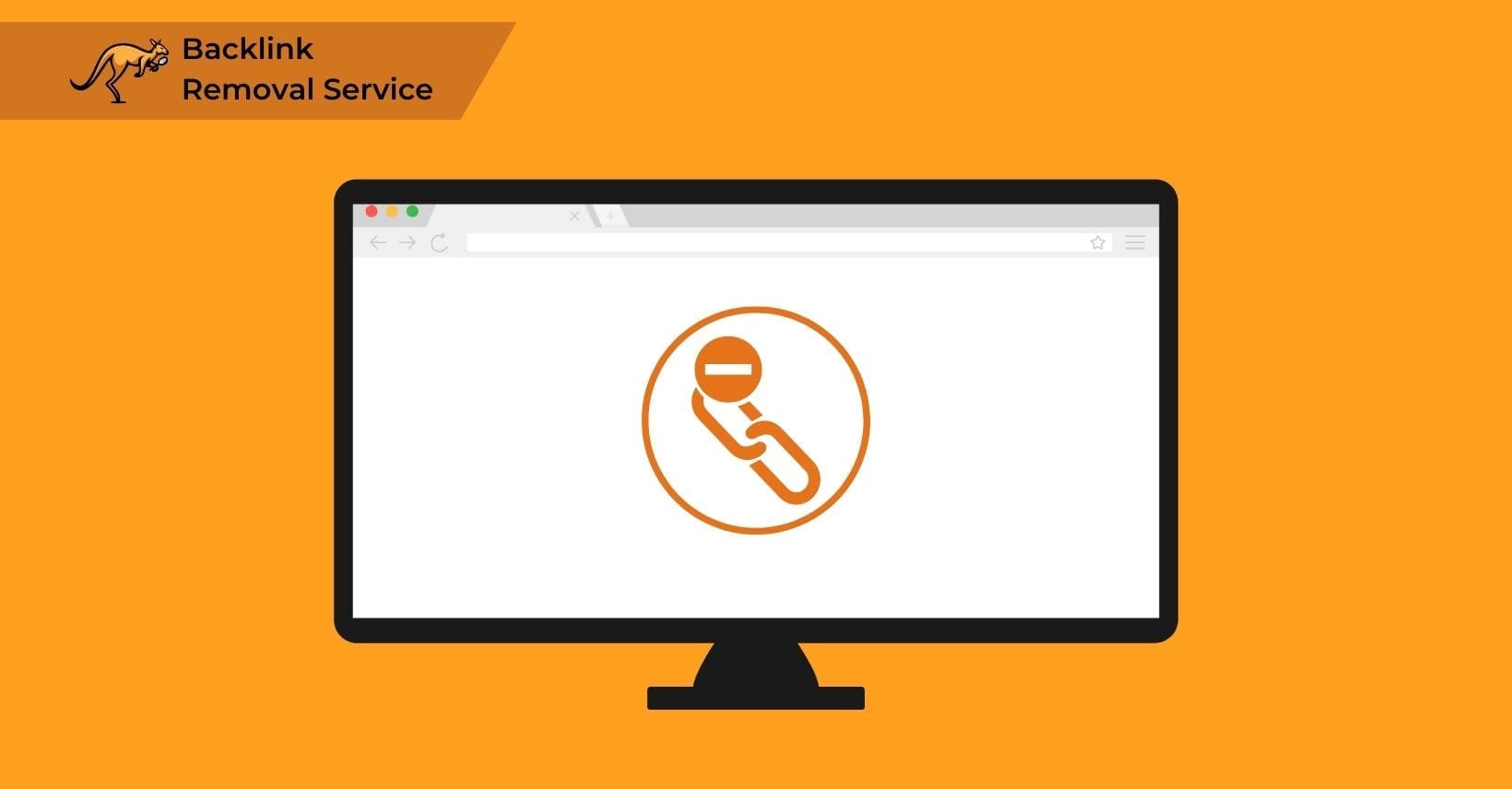Without link building, it is nearly impossible to make progress in search engine optimization.
Link building, which is the practice of developing or attracting hyperlinks from other authoritative websites, adds to SEO success in a variety of ways. Links convey trust and authority.
When one website connects to another, it is basically suggesting that the connected webpage or website is worthy of interest, traffic, or awareness or that the linked website includes more material related to the topic at hand.
As a result, search engines often regard links as citations, similar to sources in academic texts.
The phrase “link building” refers to a number of practices aimed at increasing traffic (clicks) and authority (relevance) to a website.
Popular methods for building links include fresh mention link building, guest blogging, broken link building, link reclamation, and image link building, among others.
SEO practitioners aiming to raise the overall quantity and quality of a site’s ranks ought to look at all of these options.
This blog will focus on image link building particularly. Read on below for the answers to all your questions about image link building strategies!
What Is Image Link Building?
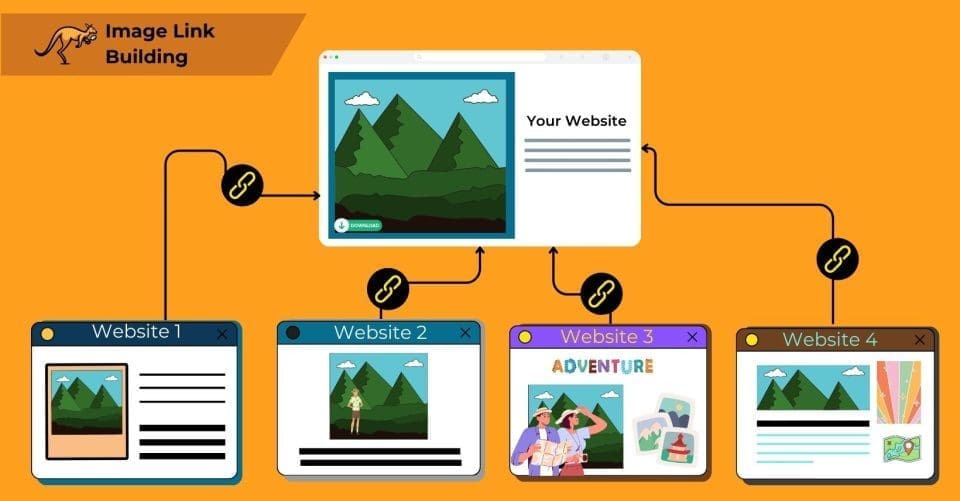
Image link building is a link building approach that entails earning or requesting connections to your website from external sites which display a image that you own.
Any image file developed or held by a website or its webmaster is considered an owned image.
Many link builders prioritize link building tactics that predominantly use text content since the keywords they are seeking for rankings will inevitably be text.
This is why guest blogging is such a popular (and often messy) link building method.
While these text-based methods are essential and should be included in every link building effort, this mindset is also rather restricted.
As you probably know, no matter whether it is a photo or text, a hyperlink transmits authority, significance, and traffic.
Fortunately, search engine crawlers are more sophisticated and clever than they were when link building first became a specialized field.
It is a mistake to dismiss potential links because they do not appear to contribute directly to a certain keyword goal.
While keywords play a crucial role in SEO, it’s important to recognize the value of visuals in your strategy. Guest posts can target distinct audiences, but images spread quickly online, drawing in high-quality links.
This natural progression of sharing and linking underlines the effectiveness of image link building. Integrating visually appealing content into your SEO approach creates organic connections that enhance your site’s visibility and link profile.
This seamless integration of images into your strategy demonstrates why image link-building is a useful component of modern SEO practices.
Why is Image Link Building Useful?
The reason it is a good idea to incorporate image link building in your link building methods is that photos provide a lot of possibilities.
Every website wants to improve their visual experiences, but most are incapable to develop enough visual assets to keep their users engaged.
That means that they need to use images from elsewhere, and the embed code for those images goes straight back to the link profile of the site that originally posted them.
Remember, an image is proverbially worth a thousand words. Do you want to write about a certain type of shoe? You obviously want to show a photo of one. Discussing your favorite breed of cat?
Again, an article would be incomplete without a photograph! There are possibilities with images regardless of your site’s focus.
In general, high-quality images are a more valuable and widely desired sort of web material than text.
If you already own or can create high-quality images for your own use on your own website, you have linkable assets that may be successfully used on other websites.
After they have been used like that, creating a link back to you, the image’s owner, is a simple additional step with important advantages.
Using photos without permission and attribution is not only unethical, but it is also unlawful.
Permitting the use of your images with the condition of attributing them back to your site not only expands your reach by displaying your content to a wider audience but also bolsters your website’s credibility.
This approach lays the foundation for understanding how image link building functions, seamlessly transitioning into the exploration of its mechanisms and strategies that enhance site authority and visibility.
How does Image Link Building Work?
Image link building is simple if you already have images that you believe to be valuable.
If not, you will need to create images before you can get started incorporating image usage into your link building campaign.
You should set up or construct a private database, library, or gallery of photos and cinemagraphs to provide to bloggers in exchange for links (through embed codes or manual link attribution for the image that they will use for their blog articles).
It is key to supply photographs that are relevant to your site’s niche in order to readily get bloggers to use the images that you will be providing to them.
You could hire photographers, buy premium photographs, or employ a graphic designer to make cinemagraphs and infographics, or you can do all of this yourself.
What matters is the end result: your goal is to fill your private gallery with amazing images that you own.
After you have done this, the first step is to inventory all of the photographs that your site owns and hosts. You should do this on a regular basis.
After that, open Google Image search and perform a Google reverse image search to discover where your image appears on the web.
Begin with any major website you may be familiar with and see whether the picture connects to your site.
If it does not have a link, add that website to a list of potential other sites you could potentially contact.
Reverse image search is the best way to do this manually, but there are automatic SEO tools that can be used for automated reverse image search too.
After you have gathered all of the sites that are already using your photographs, begin compiling a list of sites that you believe would be interested in your images.
Make another list of prospects to whom you could offer alerts when you create and upload new photos or assets.
While your primary objective in image link building should be to broaden the range of individual domains linking back to your site, expanding the number of links from these domains can also greatly enhance your strategy.
This approach drives organic traffic efficiently and sidesteps the complexness of relying solely on social media or intricate keyword strategies. Next, we transition to preparing your image library, an essential step that ensures the images you use are optimized and ready to make the most impact in your link-building efforts.
Preparing Your Image Library
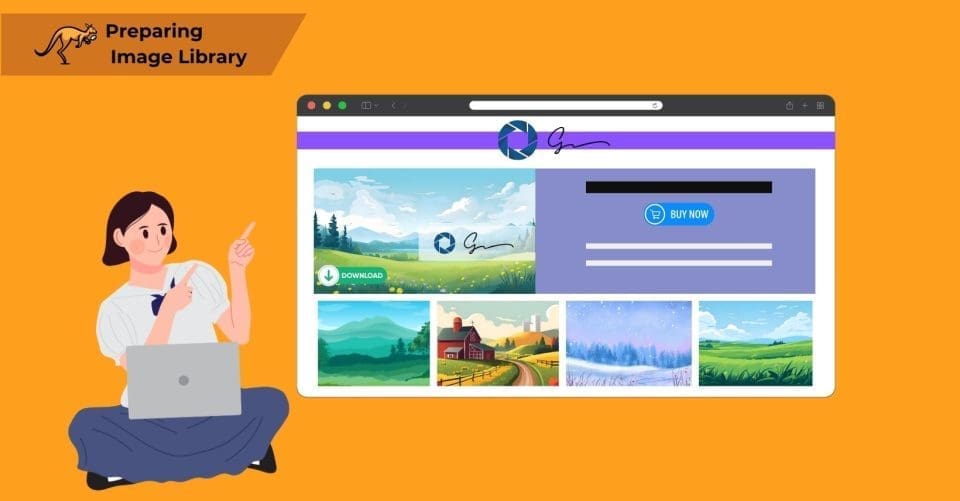
Creating your own images is important, but to maximize your returns, you are going to need to create the right images.
It is no use having a library of visual content if nobody can find it, or worse, nobody wants to use it.
That means you need to think regarding which images are going to be useful for other websites and prepare them appropriately so that they can be found.
In practice, this means that you want to be creating images to fit popular niches. Product photos, stock-style photography, or other similar visual content that is useful and easy to read.
They need to be high-quality images, and a good way to find inspiration here is to look at Pinterest marketing, Shutterstock related searches, and the kinds of easy-to-decipher images that are used to illustrate how-to guides.
If you are not sure how popular an image is, using metrics such as Flickr stats is a good way to check without needing advanced SEO industry tools.
Once you have worked out what is popular, create similar images.
If you can own meme-like images, that is a good start, and the wider the range of images in your library, the higher your chances of getting Pinterest marketing converts and inbound links are!
Once you have created the actual image file, it is time to make that visual content easy to find. This is where Google trends and keyword research come in useful.
You are going to want to ensure that the image’s file name is packed with the relevant keywords, as this sort of metadata is necessary for Google image search results, just like it is for blog post pages.
Use keyword-rich file names, detailed descriptions, and all of the other SEO metrics that you would use for text pages.
The image filename is the most important of these, but alt text and descriptions on the webpage matter too.
Alt text is the image description and the most important element when it comes to text featured in metadata attributes.
Providing the relevant text information for your image helps search engines better interpret and match the information with the correct users’ searches.
In Photoshop, you can produce keyword-rich alt text as well as a hyperlink to the necessary information on the web.
This system was created for visually impaired users, designed to allow screen-reading devices to explain the image to the user.
It works in a similar way for search engine bots: this text gives engine crawlers context for images that they can’t see.
The difficulty here is that you, as an image owner, have no influence over what another site owner uses as alt text on an image link.
While you can make suggestions, they are not legally binding, and webmasters or site owners may dislike feeling micromanaged.
You may try to include some information on the image and the advantages of appropriate metadata in your outreach to a site that is using one of your photos, but remember that this is merely a suggestion, and the webmaster of the other site is under no obligation to actually use your suggestions at all.
Alt text should be relevant and appropriate, but as long as it is there and adequately describes the image, it is providing you with some level of benefit, and that is probably enough for most purposes.
Optimizing your images to appear at the top of search engine results can greatly increase their use across various digital platforms, from blog posts to social media. Visual content can attract links like textual content by enhancing engagement and visibility.
This strategic approach ensures that your images not only captivate but also serve as a powerful tool in your link-building arsenal, seamlessly leading into the critical role of keyword research in optimizing images for maximum SEO impact. Next, we will explore how integrating keyword research with your images can amplify their reach and effectiveness in attracting links.
Keyword Research and Images
The importance of keyword research in SEO cannot be overstated. You can use the research findings to guide the way you approach your photographs in order to improve your image rating.
A wonderful way to find popular subjects is to use Google Trends. Keep up with the latest news and hot topics. Use trends to your advantage by determining how certain issues relate to your brand’s specialty.
Creating popular material, regardless of whether or not it is related to your business, increases the number of shares and mentions you are likely to get for your images.
Evaluate keywords with link intent. This is a simple technique that can help guide your research. You can employ image search terms to locate prospective new link sources.
This can help you locate appropriate platforms to increase your SEO efforts. Search Google for long-tail keywords and choose images related to your field.
Look for the source of the images and try to gain links from those websites.
Effective SEO through link building relies on collaborative efforts and strategic niche targeting. By identifying and engaging with websites within your niche, you can establish reciprocal links that bolster your SEO immensely. This approach not only strengthens your current link strategy but also prepares you to venture beyond fleeting trends.
By focusing on deep, niche-specific connections, you can ensure that your link-building efforts are sustainable and impactful, setting a solid foundation as we explore Going Beyond Trends.
Going Beyond Trends
While building images based on current popular trends is a great way to build links in the long term, the lifespan of content built around this approach will be very limited.
Eventually, those topics will stop trending, and then nobody will link to your images anymore. What you need to do is combine trending topics with evergreen images.
Evergreen visual content might not get the immediate traffic spike that trendy images of the moment and topical memes do, but it will have a much longer tail.
Leveraging the immediate influx of attention from topical images and the enduring draw of evergreen visuals, such as guide illustrations and stock photos, ensures a balanced strategy that maximizes your site’s value.
This dual approach capitalizes on short-term traffic surges and secures sustained growth, highlighting the significance of selecting images with lasting appeal and direct relevance to your content.
Moving into a discussion on Image Relevance, we’ll explore how closely aligning your visuals with your content’s theme can further enhance your site’s SEO performance and audience engagement.
Image Relevance
Choosing the right niche for your website’s image library can greatly enhance your image link-building strategy.
While popular topics like dogs offer widespread appeal, they also face immense competition, making it challenging for your images to stand out. Conversely, focusing on specialized niches, such as mortgages, can increase the likelihood that content creators will utilize your well-tagged and relevant images in that field.
This targeted approach not only boosts the usage of your images but also ensures they appear in contextually appropriate settings, enhancing the value of each link created.
This strategy of leveraging niche-specific images sets the stage for utilizing more complex visual content forms, such as infographics, which we will explore next in our discussion on Image Link Building with Infographics.
Image Link Building with Infographics
Infographics have become a cornerstone of modern link-building strategies, offering significant boosts in links, brand mentions, and social shares.
This form of image optimization stands out as a less saturated niche within the broader landscape of visual content marketing. Infographics can enhance their effectiveness by elevating data visualization—making it interactive and ensuring accuracy and aesthetic appeal.
Once created, these visuals should be distributed through infographic directories and linked across social media platforms to maximize exposure. The shareable nature of infographics necessitates concerted promotional efforts to achieve the viral spread needed to impact your site’s link profile immensely.
This strategic sharing leads naturally to leveraging social media platforms further to amplify the reach and effectiveness of your images.
Using Social Media to Share Your Images
What better method to distribute your visual material than on the most popular photo-sharing networks, Instagram and Pinterest? Pinterest has nearly half a billion monthly users, while Instagram has over 1.3 billion active users.
You can target clients who are likely to interact with your material on various social media networks by buying adverts.
Many companies tend to prioritize Instagram advertisements but do not overlook Pinterest! Pinterest marketing converts more effectively and more quickly since there are fewer steps from discovery to conversion.
So keep both social media platform options in mind while developing your marketing plan.
You will need to start building a strong and focused following base on Pinterest, just as you would on any other social network.
Begin by requesting that your fans from other social networks (Twitter, Facebook, Bluesky) follow you on Pinterest as well.
It is also a good idea to follow and engage with active users in your particular industry niche by simply keeping track of who pins/repins popular photos in your target categories.
Repin and connect with their entries to create relationships that will help your campaign whenever you start reaching out to them.
Typography appears to be quite popular in most Tumblr communities, as many of their active users are readily lured in by visually appealing text.
This might not seem like an obvious social network to take advantage of, but it can be extremely effective.
Using this strategy to acquire and attract more natural connections to a website is not difficult; all you need is good content and the knowledge of how and where to market it.
Begin by transforming inspiring, industry-specific, and comedic phrases into typography and publishing it on Tumblr, with a link to your website embedded in the post.
This is a great free way to post images with a high chance of going viral and creating a huge number of image links to your website.
Reddit ads are also a good way to share your images. There are two ways to use Reddit for advertising.
You can use a promoted post, which just looks like a regular Reddit post that appears in users’ feeds with a pale blue background and a “promoted” tag.
Alternatively, you can shell out for a display ad, which is a form of banner ad.
While Reddit banner ads provide substantial exposure and can be an effective tool for generating traffic, their cost of around $30k makes them a less accessible option for many marketers. Utilizing visual content offers a compelling alternative for those seeking more cost-effective strategies to enhance their link-building efforts.
This approach shifts the focus from expensive advertising to creative methods that attract organic links, leading directly into the discussion on using images as link bait to build links, where visuals serve as powerful magnets to draw in links naturally and affordably.
Using Images as Link Bait to Build Links
Another significant advantage of using photos as a link building tactic is that they may take many, many different forms.
Images that can readily draw links or function as link bait include locations, people, infographics, webcomics, and charts and graphs. Any piece of information meant to draw links to your website is considered link bait.
Popular charts, graphs, infographics, and other instructive pieces of material are frequently found on several websites, all with links back to the original source.
These form the majority of image-based links. If they are not image links, they are frequently accompanied by attribution in the form of a text link.
In any case, the image has given your site credibility by bringing links back to your site.
Creating engaging link bait content is an effective strategy that captures immediate attention and sustains it over time.
This tactic, utilized by renowned platforms from news outlets to Buzzfeed, revolves around preparing captivating and informative pieces by aggregating diverse insights from the internet.
This approach not only boosts visibility but also positions you as a resource hub, seamlessly transitioning into becoming your curator. By curating high-quality content, you transform your platform into a valuable resource, enhancing its appeal to users and link builders alike.
Be Your Own Curator
Embracing the role of curator for your niche, gathering striking images, and showcasing them in a blog post enhances your content’s appeal and facilitates outreach.
By crediting and notifying original creators that their images are featured in your compilation, you naturally encourage them to share your post across their networks. This strategy boosts not only your content’s exposure but also its potential to attract links.
Such reciprocal relationships can effectively expand your content’s reach, setting the stage for leveraging these connections further through guest blogging opportunities.
This approach underscores the strategic benefit of using guest blogging as a platform to amplify your visibility and link-building efforts.
Use Guest Blogging As an Opportunity
Utilizing images in guest articles enriches the content and strategically embeds backlinks that enhance your site’s SEO value. By embedding images directly into the HTML of the article, you ensure the seamless integration of visual content, which not only makes the article more engaging but also secures all potential backlinks.
This approach not only diversifies your link profile but also optimizes your images for Google’s search algorithms through detailed metadata, descriptions, and carefully chosen filenames. Such practices enhance the discoverability and appeal of your content, paving the way for a broader SEO strategy that leverages textual and visual elements to elevate your site’s visibility.
This strategic integration of images and SEO brings us to a comprehensive examination of how strategic image usage can boost your overall SEO efforts, as we will summarize in the following section.
Summary: Elevating SEO with Strategic Image Usage
All types of links to your website provide value, and image linking is a great way to ensure organic backlinks without having to worry about anchor text or poorly written artificial backlink posts.
People simply like images and like to share them, and if those images contain links back to your site, then that means your links are getting shared around the net at a spectacular pace.
This can spread much faster than text posts and often requires less manual upkeep to ensure that the links remain relevant and functional.
You can’t just post a bunch of bad photoshops and call it a day, though. You need to do your keyword research and optimize your images properly, just like you would with a text post.
Image link building is a fully functional SEO tool in your toolbox, not a quick and easy patch you can slap over your site and forget about.
Take it seriously, put the work in, and create attractive, effective images that people want to use and want to share, and that work will more than pay for itself over time as those images continue to propagate across the internet for years to come.
